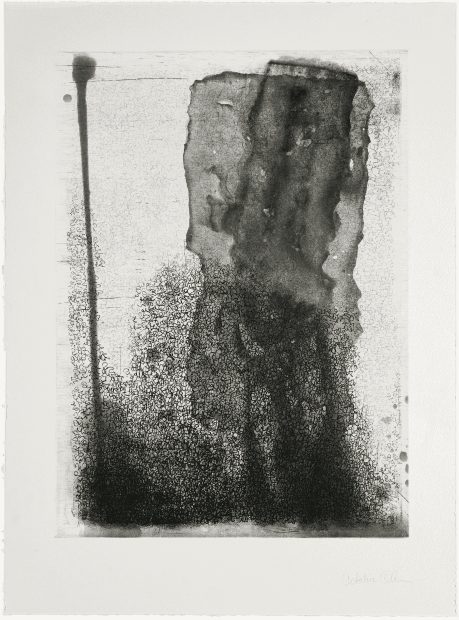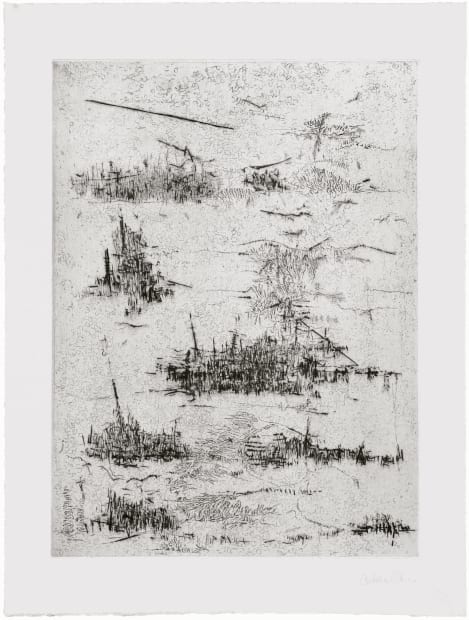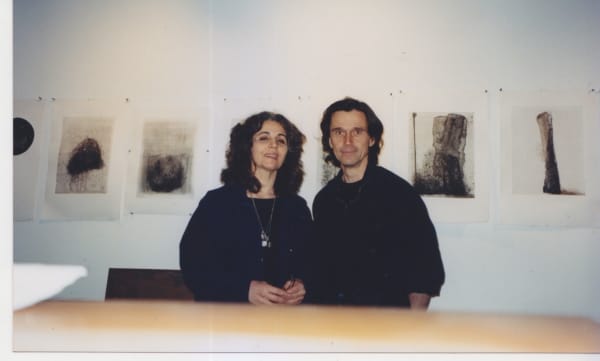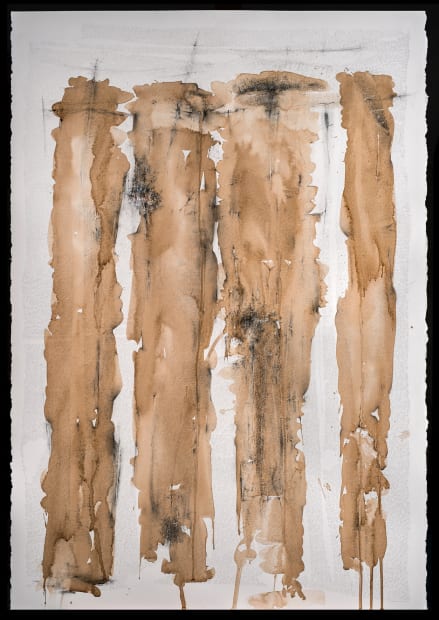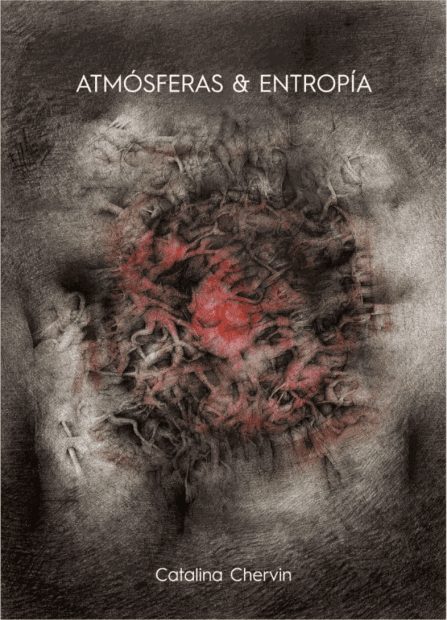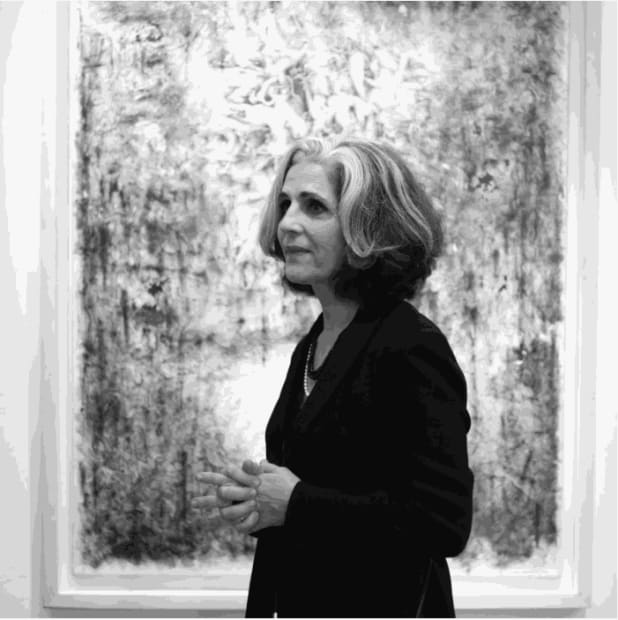-
 Photo: Pablo Messil
Photo: Pablo Messil -
Catalina Chervin in her studio, Buenos Aires
Portraits by Sebastián Szyd, 2012 -

Catalina Chervin, Untitled II (About Darkness Series), 1994 - 2014, Hannae Brand Collection, Singapore
-
Catalina Chervin: Catharsis
Hutchinson Modern & Contemporary -
Details of Chervin's studio
Photographed by Sebastián Szyd -

Catalina Chervin, Untitled (Apocalypse series), 2003
-
MACBA I Retrato en movimiento: Catalina Chervin
Interview of Catalina Chervin by Ángel Navarro, Curator at the Museo de Arte Contemporáneo Buenos Aires, about her exhibition "Atmósferas & Entropía" for their "Retrato en movimiento" series, 2020
-
!['[Catalina Chervin's] pictures are neither entirely abstract nor anywhere near representational; her imagery at once allusive and elusive. Her works...](data:image/gif;base64,R0lGODlhAQABAIAAAAAAAP///yH5BAEAAAAALAAAAAABAAEAAAIBRAA7)
Catalina Chervin, Untitled I (Street Art Series), 2014-16
-
Poetry & Print
 Catalina Chervin, Untitled, 2004, Hard and soft ground etching with spite bite aquatint, printed on Somerset White paper, Master Printer: Lothar Osterburg, New York, 2004, Image size: 15 x 11 in (38.1 x 27.9 cm), Sheet size: 21 x 16 in (53.3 x 40.6 cm), Artist proof edition of 5
Catalina Chervin, Untitled, 2004, Hard and soft ground etching with spite bite aquatint, printed on Somerset White paper, Master Printer: Lothar Osterburg, New York, 2004, Image size: 15 x 11 in (38.1 x 27.9 cm), Sheet size: 21 x 16 in (53.3 x 40.6 cm), Artist proof edition of 5 -
 Catalina Chervin, IT 2, 2015, Hard and soft ground etching, printed on Somerset Textured White paper, Master Printer: Lothar Osterburg, New York, 2015, Image size: 15 x 11 in (38.1 x 27.9 cm), Sheet size: 21 x 16 in (53.3 x 40.6 cm), Edition of 20
Catalina Chervin, IT 2, 2015, Hard and soft ground etching, printed on Somerset Textured White paper, Master Printer: Lothar Osterburg, New York, 2015, Image size: 15 x 11 in (38.1 x 27.9 cm), Sheet size: 21 x 16 in (53.3 x 40.6 cm), Edition of 20 -
 Catalina Chervin, Song 3, 2010, Hard ground and soft ground etching with dry point, printed on Rives De Lin with Kozo chine collé, Master Printer: Lothar Osterburg, New York, 2010, Image size: 15 x 11 in (38.1 x 27.9 cm), Sheet size: 21 x 16 in (53.3 x 40.6 cm), Edition of 20
Catalina Chervin, Song 3, 2010, Hard ground and soft ground etching with dry point, printed on Rives De Lin with Kozo chine collé, Master Printer: Lothar Osterburg, New York, 2010, Image size: 15 x 11 in (38.1 x 27.9 cm), Sheet size: 21 x 16 in (53.3 x 40.6 cm), Edition of 20 -
Chervin & Master Printmakers

Catalina Chervin with Robert Blackburn circa 1999.
-
Chervin with Lothar Osterburg, Brooklyn, NY
-
Printmaking with Devraj Dakoji, New York
-
 Catalina at work, photographed by Sebastián Szyd
Catalina at work, photographed by Sebastián Szyd -

-

Untitled I (Discarded Skin Series), 2020-21, Charcoal, pencil and walnut ink on Lanaquarelle paper 59 3/50 x 41 17/50 in
-

Portrait of Catalina Chervin in her studio, photographed by Sebastián Szyd
-

-
Listen to Catalina Chervin discuss her workin in "Atmósferas y Entropía" at The Museum of Contemporary Art Buenos Aires. The exhibition ran from March 6, 2020 through February 14, 2021.
MACBA | ATMÓSFERAS Y ENTROPÍA I CATALINA CHERVIN
The Museum of Contemporary Art Buenos Aires | Atmospheres and Entropy | Catalina Chervin -
Los comienzos del cuerpo, Presentación de Atmósferas & entropía de Catalina Chervin
por Gonzalo AguilarHace no mucho tiempo, una amiga me comentó que Catalina Chervin estaba preparando una serie de obras inspiradas en Clarice Lispector. El encuentro de Catalina con Clarice me resultó afortunado, previsible, casi diría que natural, porque aún sin ver las obras en cuestión pensé que en ambas había un problema que, cada una en sus prácticas artísticas específicas, trataba de solucionar: cómo poner el cuerpo. Cómo poner el cuerpo en aquello que le es heterogéneo, sea la escritura narrativa en el caso de Clarice, o el dibujo y las artes plásticas en el de Catalina. Porque frente a lo que parece la solución relativamente fácil que propone la performance, que es poner el cuerpo, tal vez lo que se pierde es que un cuerpo no es necesariamente los miembros, la carne, el armazón óseo o la insistencia orgánica sino algo más y que por eso los caminos para llevar el cuerpo—insisto, a la escritura o al dibujo—pueden ser complicados, más aún cuando perdimos la fe en las representaciones más o menos académicas, representativas o figurativas que en realidad no nos acercan a los cuerpo sino que nos alejan de ellos. Atmósferas & entropía, el libro que presentamos hoy, ensaya por lo menos dos maneras de poner el cuerpo. Con la figuración—no con las figuras—y con el trazo.
Con la figuración porque en muchas de las obras se anuncian acá o allá, figuras humanas, fragmentos de cuerpos u órganos que parecen más raíces o rizomas o algo que podríamos llamar tentáculos, pero esto es solo una metáfora porque son cuerpos, o fragmentos que anuncian cuerpos que todavía no son cuerpos, que todavía no tienen nombre, como muchas de las obras, que no tienen título. No tienen título pero sí tienen título las series a las que pertenecen (Apocalipsis, Street Art, Las pequeñas marcas, La oscuridad), como si fueran declinaciones mudas de dimensiones en la que palabras, figuras y cuerpos todavía no se ven, no se anunciaron (la oscuridad) o ya dejaron de ser (apocalipsis). En “Sin título III, serie La oscuridad” se adivina por ejemplo lo que parece ser una mujer en cuclillas pero que observada más detenidamente no es una mujer ni está en cuclillas, es más bien una forma orgánica amenazante como la cucaracha de Clarice Lispector, un fragmento de vida de un órgano sin cuerpo. Eso es lo que sucede en las obras de Catalina si las miramos, erróneamente, a través de la tradición figurativa: son sólo anuncios o insinuaciones que se ocultan ni bien creemos reconocerlas y que nos dejan en un umbral: en el blanco del papel que está en casi todas las obras y que las “pequeñas marcas” no logran ocupar, no pueden suprimir.
Por eso, más que el cuerpo como figura, la segunda vía es la que termina dominando. El cuerpo no es una figura (la figura nunca se forma, nunca aparece, nunca se nos entrega) sino un trazo, una “pequeña marca” (para usar la expresión de otra de las series).
No me parece baladí recordar que Clarice Lispector inicia La pasión según GH con seis guiones, como si las palabras ya no fueran suficientes pero tampoco la conciencia, esa supuesta interioridad. Lo que nos sale al encuentro es esa marca (una serie de pequeñas líneas) que es el testimonio de que allí hay una escritora que está dejando una materia gráfica, una materia que no admite concepto. En Catalina, toda la obra está llena de pequeñas marcas, trazos diminutos que se superponen, que traen oscuridad. El lápiz, la tinta, el carbón, todos los negros con su propia materialidad, su modo diferente de recorrer el papel y de agruparse formando territorios muy abigarrados, melancólicos como el sol negro del que hablaba Gérard de Nerval.
En la serie “Las grandes marcas”, a medida que se avanza, se invierte el procedimiento: la marca es lo que no está dibujado, lo que no es trazo. Los blancos que parecen arrancados, como si hubiese una cinta que se saca y que queda entonces como vacío. En Huella digital podría ser desde un dedo gigante o nervaduras que recuerdan a una hoja. Acá es la falta de trazo, la rasgadura o el corte. Si el cuerpo es el trazo, la mano que podemos sentir que hace un recorrido, que deja una marca; en esta serie es lo que se extrae, lo que está ahí pero escamoteado.
¿Qué es el cuerpo entonces? Lo que deja una marca. Lo que se da a la mirada como una marca: un trazo o un blanco que fue habitado por un trazo, un gesto, una mano que concentra toda la vibración de un cuerpo que dibuja. Es una imposibilidad que revela una potencia. Clarice Lispector lo dice en su libro más extraño, Agua viva: “Al escribir no puedo fabricar como en la pintura, cuando fabrico artesanalmente un color. Pero estoy intentando escribirte con todo el cuerpo, enviando una flecha que se clava en el punto blando y neurálgico de la palabra. Mi cuerpo incógnito te dice: dinosaurios, ictiosauros y plesiosaurios, con sentido solo auditivo, sin que por ello se conviertan paja seca, sino húmeda. No pinto ideas, pinto lo más inalcanzable “para siempre”. O “para nunca”, es lo mismo. Antes, pinto pintura. Y antes de eso te escribo dura escritura”.
Figuraciones y trazos, toda una lucha, un combate del cuerpo para conquistar el blanco de la tela. Lo que Catalina en el texto que introduce el libro llamó el vacío. “Hay un vacío en mi obra, la expresión de un vacío que se llena de formas”. Pero estas formas son, en definitiva, informes, porque el cuerpo nunca está ahí, están sus huellas o las vibraciones que llegan al ojo del que mira. Podríamos decir de nosotros, que contemplamos la obra, lo que escribió—una vez más—Clarice en La pasión según GH: “Atrapada allí dentro por una red de vacíos, olvidaba de nuevo el plan de ordenamiento que me había propuesto, no sabía con certeza por dónde comenzar”. Por dónde comenzar. Una buena pregunta para un libro que se llama Atmósferas & entropía. Atmósfera es lo que no tiene comienzo, entropía es lo que ya comenzó y no tiene vuelta atrás. Entonces, dónde comienza el cuerpo. Por dónde comenzar. Las obras de Catalina Chervin nos responden: por cualquier lado, por un gesto, un trazo, una huella, para ocupar el vacío y, al mismo tiempo, revelarlo.
-
Catalina Chervin in her Studio
-

Catalina Chervin, photo courtesy of Pato Parodi
Join our mailing list
* denotes required fields
We will process the personal data you have supplied to communicate with you in accordance with our Privacy Policy. You can unsubscribe or change your preferences at any time by clicking the link in our emails.

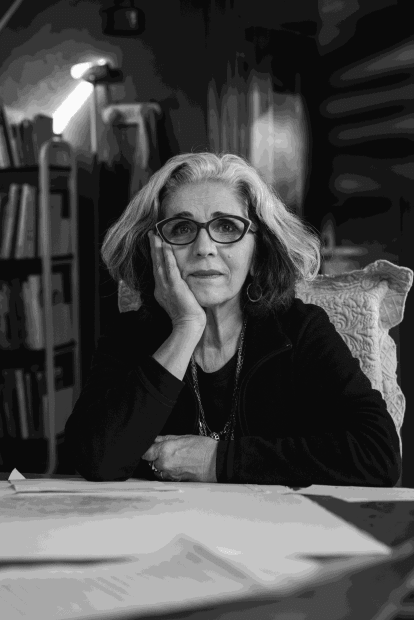


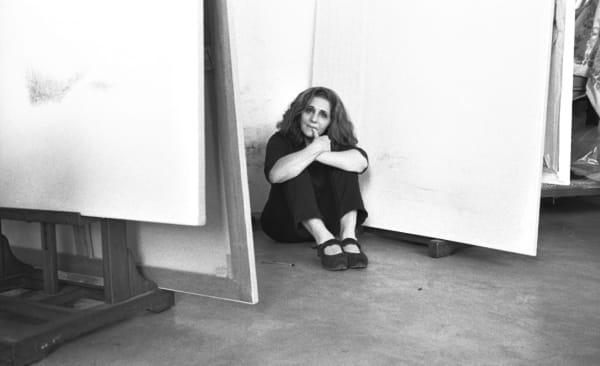


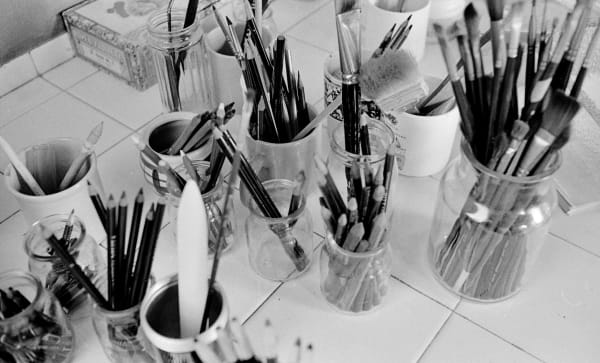





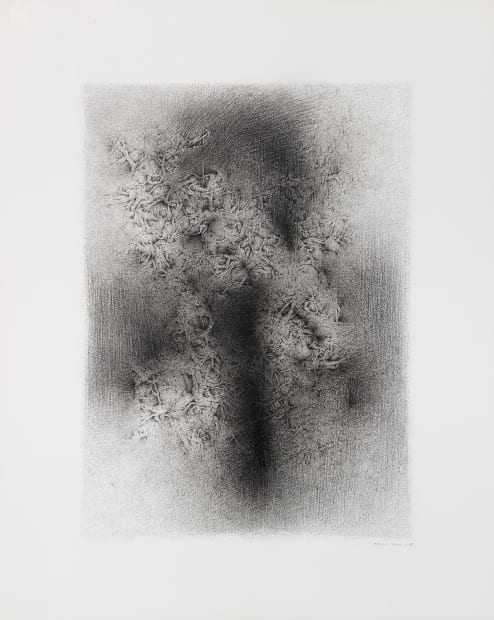
!['[Catalina Chervin's] pictures are neither entirely abstract nor anywhere near representational; her imagery at once allusive and elusive. Her works...](https://artlogic-res.cloudinary.com/w_620,h_620,c_limit,f_auto,fl_lossy,q_auto/ws-hutchinsonmodern/usr/images/feature_panels/image/items/3d/3d9a332b9ae0471cbd3ef0f8edb86e57/screen-shot-2021-04-16-at-2.41.43-pm.png)
